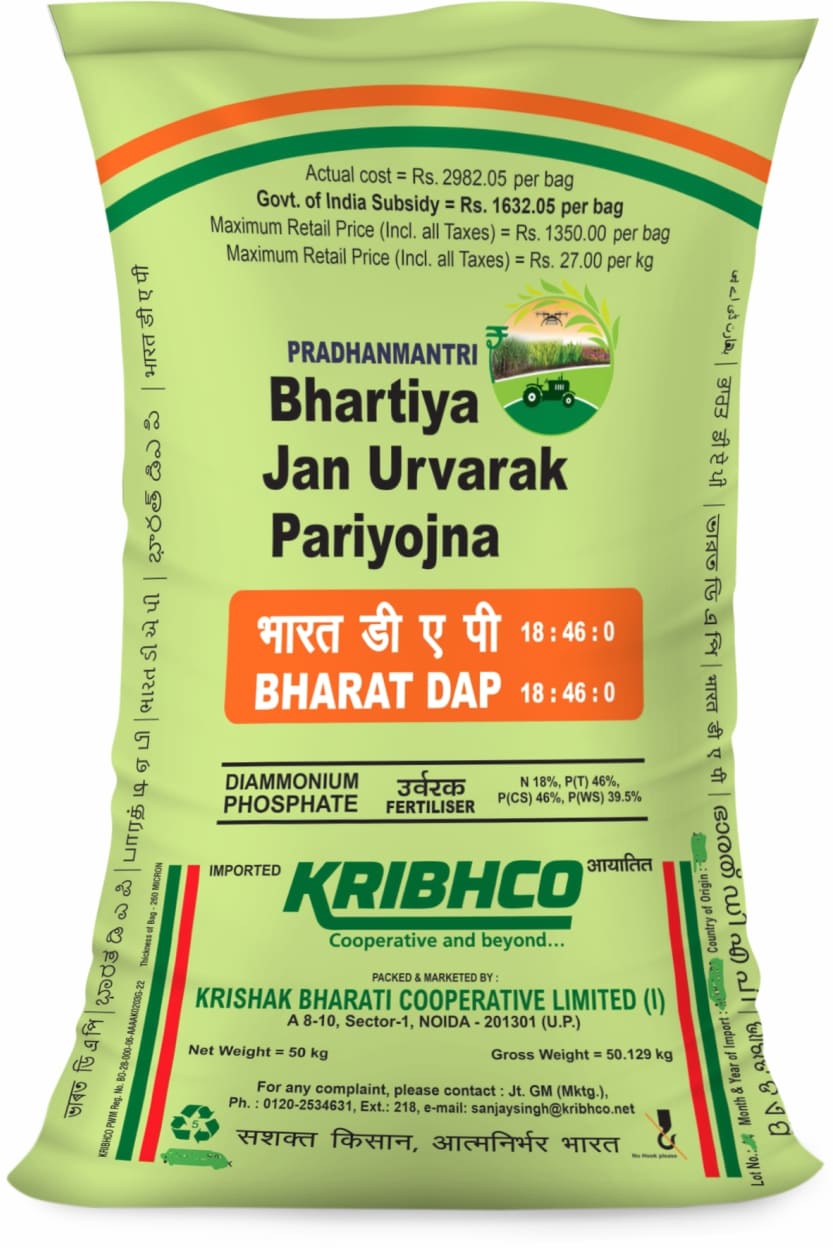The agricultural landscape in India is constantly evolving, and one of the key components influencing this change is the price of fertilizers. Among these, DAP fertilizer prices in India play a crucial role in determining the economic viability of farming for many.
With recent government interventions and global market fluctuations, understanding these prices is essential for both farmers and consumers alike.
Also Read: Top 10 Dap Manufacturers In India
In this blog, we will delve into the current state of DAP fertilizer prices, examining factors that contribute to their volatility. We will also explore how government policies impact these prices and what farmers can expect in the coming months.
Whether you are a farmer trying to budget for the upcoming planting season or simply curious about agricultural economics, this article will provide valuable information. Join us as we uncover the intricacies of DAP fertilizer pricing in India.
Explore the dynamics of DAP fertilizer prices in India, and learn how these changes affect farmers and the agricultural economy.
DAP Fertilizer Prices in India

DAP fertilizer prices in India have been under scrutiny recently due to various economic factors. As of January 2025, the retail price for a 50 kg bag of DAP is expected to rise from ₹1,350 to approximately ₹1,550. This increase is primarily attributed to the expiration of government subsidies and rising import costs due to a weakening rupee.
The Indian government has extended a special subsidy package aimed at stabilizing these prices, but challenges remain. The subsidy was initially set at ₹3,500 per tonne, which has helped keep prices manageable for farmers. However, with global market pressures and currency fluctuations, the sustainability of this subsidy is uncertain.

Factors Influencing DAP Prices in India
Several factors contribute to the fluctuations in DAP fertilizer prices in India. Here are some key elements:
- Global Market Trends: Prices of DAP on international markets have seen significant volatility due to geopolitical tensions and supply chain disruptions.
- Currency Exchange Rates: The depreciation of the Indian rupee against the US dollar increases import costs, directly impacting local fertilizer prices.
- Government Policies: Subsidies play a crucial role in stabilizing prices; however, any changes or expirations can lead to sudden price hikes.
- Seasonal Demand: The demand for fertilizers typically spikes during planting seasons, which can further influence pricing dynamics.
The Role of Government Subsidies
The Indian government has been proactive in managing DAP fertilizer prices in India. The recent extension of subsidies aims to ensure that farmers can access fertilizers at reasonable rates. This decision is critical as it supports agricultural productivity and food security across the nation.
The financial implications of these subsidies are substantial. For instance, extending the subsidy package could cost the government up to ₹3,850 crore. This investment reflects the government's commitment to maintaining agricultural stability amidst rising global costs.
The Impact on Farmers
The anticipated increase in DAP prices poses challenges for farmers who are already grappling with rising costs across various inputs. For many smallholder farmers, even a slight increase can significantly impact their profitability and overall sustainability.
Farmers must adapt to these changes by exploring alternative fertilizers or adjusting their planting strategies. Understanding how DAP fertilizer prices in India are influenced by external factors will empower them to make better decisions moving forward.
What are the main reasons for the recent DAP price hike
1. Rising Raw Material Costs
The cost of raw materials necessary for DAP production has surged significantly. India imports nearly half of its annual DAP requirement, which totals around 11 million tonnes. The prices of these imported raw materials have increased due to various global supply chain disruptions, including geopolitical tensions and logistical challenges in regions like the Red Sea.
2. Weakening of the Rupee
The depreciation of the Indian rupee against the US dollar has further exacerbated the situation. As the rupee weakened from ₹83.50 to ₹85.50 per dollar, the import costs for DAP rose substantially, adding approximately ₹1,200 per tonne to the overall expense. This currency fluctuation has made imports more expensive, pushing manufacturers to increase retail prices.
3. End of Government Subsidies
A significant factor influencing the price hike is the expiration of a special government subsidy on DAP imports, which is set to end on December 31, 2024. This subsidy was crucial in maintaining lower prices for farmers and its removal will likely shift the financial burden onto consumers. The government had previously provided a ₹3,500 per tonne subsidy to help offset rising costs, but with its termination, companies are compelled to raise prices to maintain viability.
4. Increased Global Prices
Global market prices for DAP have risen sharply over recent months. For instance, the landed cost of DAP in India increased by 26% recently due to global price hikes and supply chain issues. This rise in international prices directly impacts domestic pricing structures.
5. Industry Viability Concerns
Fertilizer companies have been facing challenges due to unviable pricing structures that do not cover rising costs. The industry has long advocated for lifting unofficial price caps on fertilizers to enhance profitability and sustainability.
As a result of these factors, DAP prices are expected to increase by approximately 12-15%, with new rates effective from January 1, 2025, raising costs from around ₹1,350 per bag to between ₹1,550 and ₹1,590 per bag.
The interplay between government policy changes, currency fluctuations, and global market dynamics will continue to shape the fertilizer pricing landscape in India.
Frequently Asked Questions - FAQS
Q. What is DAP fertilizer?
A. DAP (Di-Ammonium Phosphate) is a widely used phosphate fertilizer that provides essential nutrients for plant growth.
Q. Why are DAP prices increasing?
A. DAP prices are increasing due to factors like subsidy expirations, rising import costs, and currency depreciation.
Q. How does government policy affect DAP prices?
A. Government policies like subsidies help stabilize DAP prices; changes can lead to price fluctuations impacting farmers directly.
Q. What is the current price of DAP fertilizer?
A. As of January 2025, DAP fertilizer is priced around ₹1,350 per 50 kg bag but may rise due to market conditions.
Q. How do global market trends impact DAP pricing?
A. Global market trends affect supply chain costs and availability, directly influencing local pricing structures for fertilizers like DAP.
Q. What should farmers do about rising DAP prices?
A. Farmers may consider alternative fertilizers or adjust their crop management practices to mitigate cost impacts from rising DAP prices.
Q. Are there any alternatives to DAP fertilizer?
A. Yes, alternatives include other phosphate-based fertilizers or organic options that may be more cost-effective depending on local conditions.
Q. How does currency fluctuation affect fertilizer costs?
A. Currency fluctuations impact import costs; a weaker rupee means higher expenses for imported fertilizers like DAP.
Q. What role does seasonal demand play in pricing?
A. Seasonal demand increases during planting times can lead to higher prices as suppliers adjust based on market needs.
Q. How can farmers stay informed about price changes?
A. Farmers can stay informed by following agricultural news sources and government announcements regarding subsidies and market trends.
Q. How do DAP fertilizer prices in India compare to last year's prices?
A. Currently, DAP fertilizer prices in India are around ₹1,350 per 50 kg bag, similar to last year. However, government subsidies have helped stabilize prices amidst rising global costs and local demand fluctuations.
Q. Which state in India has the lowest DAP fertilizer prices currently?
A. States like Uttar Pradesh and Madhya Pradesh often report lower DAP fertilizer prices due to competitive market dynamics and efficient distribution channels, making it more affordable for local farmers.
Q. Are there any government subsidies or schemes affecting DAP fertilizer prices in India?
A. Yes, the Indian government has extended a special subsidy of ₹3,500 per tonne on DAP fertilizers, ensuring farmers continue to purchase at a controlled price of ₹1,350 per bag, thus supporting agricultural sustainability.
Q. How can small farmers afford DAP fertilizer with the current prices in India?
A. Small farmers can benefit from government subsidies and schemes that lower the effective cost of DAP fertilizers. Additionally, cooperative societies often provide bulk purchasing options to reduce individual expenses.
Q. What are the alternative fertilizers to DAP if the prices are too high in India?
A. Alternatives to DAP fertilizers include urea, single super phosphate (SSP), and organic fertilizers. These options can be more cost-effective depending on soil requirements and crop types.
Q. What are the main factors influencing DAP fertilizer prices in India right now?
A. Key factors affecting DAP fertilizer prices include global market trends, currency fluctuations, government policies, and seasonal demand from farmers during planting periods.
Q. How do international DAP prices affect the Indian market?
A. International DAP prices directly impact local costs as India imports a significant amount of its fertilizer needs. Rising global prices can lead to increased retail costs for Indian farmers.
Q. How does the availability of raw materials impact DAP fertilizer prices in India?
A. The availability of raw materials such as phosphate rock and ammonia significantly influences DAP fertilizer prices. Shortages or increased costs for these inputs can lead to higher final product pricing.
Q. How do government policies and regulations affect DAP fertilizer prices in India?
A. Government policies play a crucial role by providing subsidies that stabilize DAP fertilizer prices. Regulatory measures also ensure that farmers can access essential fertilizers at affordable rates.
Q. How do import and export duties influence DAP fertilizer prices in India?
A. Import duties on raw materials for DAP fertilizers can increase production costs, leading to higher retail prices for consumers. Conversely, low export duties can encourage local production and stabilize market rates.
Q. What is the impact of rising DAP fertilizer prices on Indian agriculture?
A. Rising DAP fertilizer prices can strain farmers' budgets, potentially reducing crop yields and affecting food security. Higher costs may discourage optimal fertilization practices among smallholder farmers.
Q. How do fluctuating DAP fertilizer prices affect crop yields in India?
A. Fluctuating DAP fertilizer prices can lead to inconsistent application rates among farmers, impacting overall crop yields negatively as they may opt for reduced fertilization due to cost concerns.
Q. Where can I buy DAP fertilizer in bulk at wholesale prices in India?
A. Farmers can purchase DAP fertilizers in bulk from local agricultural cooperatives or wholesale suppliers in their region, which often offer competitive pricing compared to retail outlets.
Q. Are there any online platforms to check DAP fertilizer prices in India?
A. Yes, several online platforms provide real-time updates on DAP fertilizer prices, including agricultural marketplaces and government websites that track pricing trends across different states.
Q. What is the difference in price between different brands of DAP fertilizer in India?
A. Prices for different brands of DAP fertilizers may vary slightly due to brand reputation, packaging size, and distribution costs but generally remain within a similar range due to government price controls.
Conclusion
The dynamics surrounding DAP fertilizer prices in India are complex and influenced by multiple factors including global market trends, currency fluctuations, and government policies. As we move forward into 2025, it will be crucial for stakeholders within the agricultural sector to remain vigilant and adaptable to these changes.

